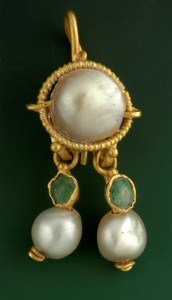I know, not exactly shocking at this point, but always worth covering. When Amenhotep III got his eye back from the museum in Basel, Switzerland, I said this:
There are going to be lots more stories like these as Switzerland confronts its long history of warehousing looted goods.
 Or one story covering 4,400 individual antiquities returned to Italy from a warehouse in Basel.
Or one story covering 4,400 individual antiquities returned to Italy from a warehouse in Basel.
They were the holdings of a husband-and-wife team of Swiss art dealers and were all recently excavated and illegal exported to Switzerland (ie, loot). The goods were seized in 2001 and only now, after the couple spent 7 years in court trying to stop Italy from getting its stuff back, is this motherlode going home.
More than half the objects were from the eastern Italian region of Apulia, an area that was heavily influenced by ancient Greek culture, said Guido Lassau, a Swiss archaeologist who worked on the case.
They include richly decorated vases and so-called kraters, large vessels that were used for mixing wine with water. The objects were stolen from upper-class tombs dating from the fifth to third centuries B.C., according to Lassau.
One item that looks like a ceramic mask modeled on a woman’s face retains the original water-soluble painting from about 300 B.C. […]
Other items belong to the pre-Etruscan Villanova culture of northern Italy, and some of the bronze figures appear to have originated on the island of Sardinia.
The oldest are bronze daggers thought to be about 4,000 years old, said Lassau.
“This is a vast haul on a dramatic scale that would have saturated the market if they had been sold,” he said, adding that very few such items are available through legal channels.
That gives you an idea of the scale of these operations. Grave robbers (tombaroli) on the ground in Italy turn over an immense number of antiquities every year. These artifacts end up in huge warehouses in countries where they don’t ask too many questions, like Switzerland until recently or Germany.
Then they sit and wait while the dealers make a slow killing selling the pieces one at a time so as not to flood market, depress prices and raise suspicions. We don’t have any idea how many thousands of stolen antiquities are currently locked up in warehouses, but the mere two warehouses I know of in detail (this one and Giacomo Medici’s astonishing hoard in Freeport, Switzerland) contained just short of 15,000 looted artifacts worth a conservative $40 million. In two warehouses.
The sources of this raging river of loot — the in-country grave robbers and site plunderers — keep the flow constant. This is why repatriation efforts are so important: it’s not the sop to nationalist sentiment that museum directors like James Cuno think it is, but a way to discourage looting and archaeological site destruction by making it in the primary buyers for illicit antiquities’ interest to demand a clean record of ownership before purchasing any artifact.


